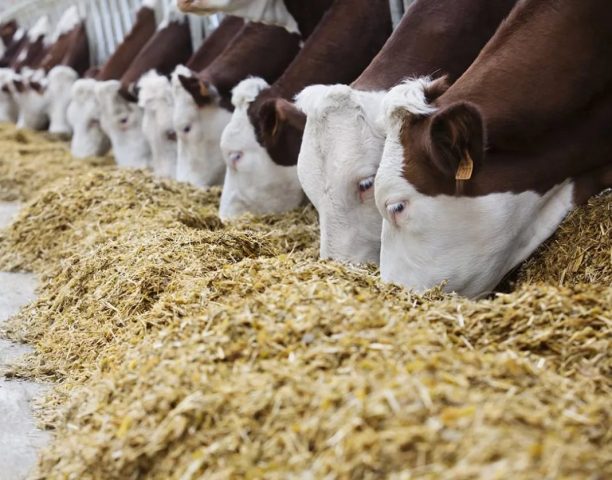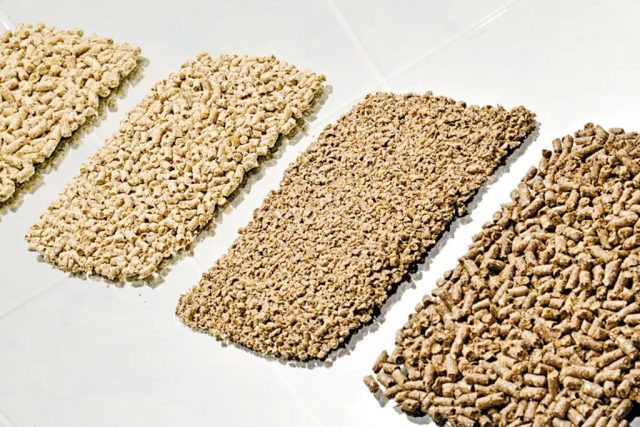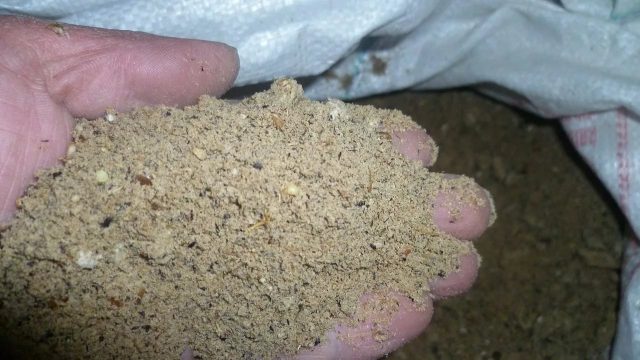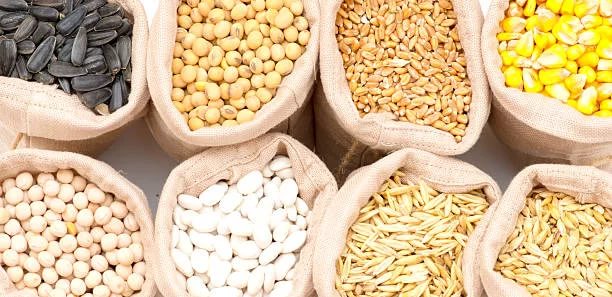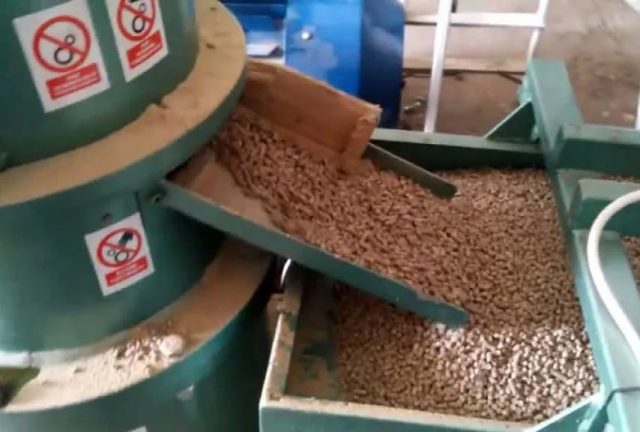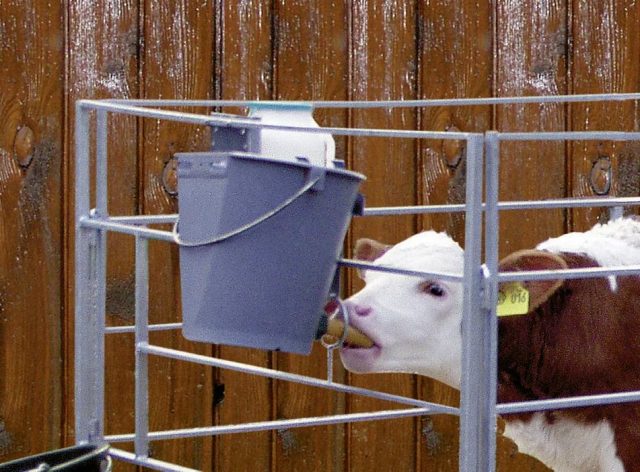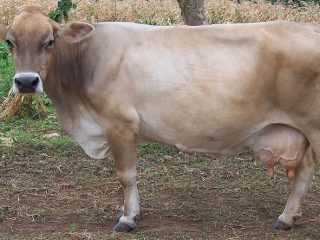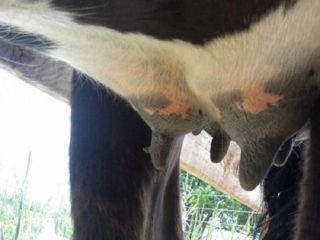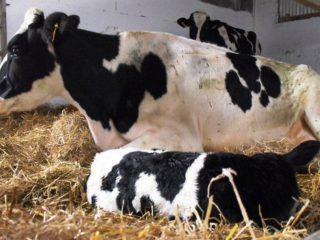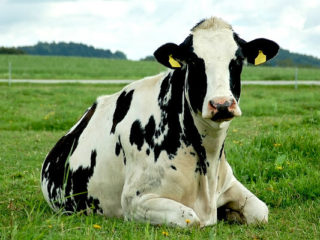Content
Currently, dry compound feeds and mixtures occupy a significant place in the diet of domestic animals, partially or completely replacing traditional plant foods. The use of such concentrates has rather great advantages. The composition of feed for cattle contains all the substances necessary for the development of animals, while working with such feed is much more convenient.
What is compound feed for cattle
Compound feed is a mixture of feed of plant and animal origin, which includes the whole complex of nutrients necessary for the development of animals in a certain concentration. The use of this type of feed makes the diet as balanced as possible.
Combined feeds are divided according to their purpose into several groups, depending on the following factors:
- type of cattle;
- age;
- growing directions (meat, dairy);
- herd productivity.
Pros and cons of feed mixtures for cattle
The use of compound feed for use in the diet of cattle has a number of positive aspects. These include:
- Convenience of work, storage and transportation.
- Economical compared to traditional feed.
- Balance, the ability to include the necessary elements in the composition.
- Environmental friendliness, safety in terms of compliance with sanitary and hygienic standards.
- Possibility to give any kind of feed (granules, powder, briquettes).
Feeding cattle with compound feed provides better results compared to conventional feed, herd productivity increases by an average of 10-15%. Due to the balanced nutrition, a strong livestock grows, healthy offspring with good immunity are born. The negative aspects of using compound feed for cattle are the following:
- Higher price compared to conventional feed.
- The need to accustom animals to such a diet from a young age, since an adult livestock may not accept such food after the traditional one.
- The complexity of self-production, the need to use special equipment.
- The need for constant monitoring of feed dosages.
Types of compound feed for cattle
Quite a lot of compound feed for cattle is produced. They are divided according to their purpose into the following types:
- For calves.
- For cows.
- For breeding bulls.
Combined feeds differ and the form of release. For ease of use, compound feed for cattle is produced in the form:
- homogeneous free-flowing mass;
- pressed granules;
- briquettes.
Loose feed is not subjected to pressing and heat treatment, so they have the shortest shelf life. Such food mixtures are made immediately before use, adding and grinding all the necessary components.
Granulated feed for cattle and its constituent components are exposed to temperature and pressure during the preparation process, due to which the individual nutrients contained in it break down into simpler and more easily digestible ones. At the same time, pathogenic microflora and pathogens are destroyed. Granulated compound feed can be stored for a long time. Compound feed in briquettes differs from granulated feed only in larger forms of release. Before use, the briquettes are crushed to the desired consistency, and then fed to the animals.
The feed mixtures also differ in their composition. Compound feeds of the complete diet (PC) include a full set of nutrients, vitamins and mineral supplements, therefore, when using them, other feeds are not used. Concentrated compound feeds (K) are used as an addition to the diet of roughage and succulent feed and are processed grain products. Premixes (P) and protein-vitamin supplements (BVD) are used to supplement the diet with the necessary set of trace elements and are added to feed in small quantities.
Composition of compound feed for cattle
Depending on which groups of cattle the compound feed is intended for, its composition also changes. This is due to the fact that at different stages of development, animals require different amounts of certain nutrients. The main component of all compound feed is grain and its processed products. In addition, a granular cattle feed recipe may include:
- meal and cakes of various oilseeds;
- roughage (straw, hay);
- legumes;
- TMV (vitamin-herbal flour);
- coniferous flour;
- meat and bone or fish meal;
- vitamin and mineral premixes.
Composition of compound feed for calves
Young animals are the most vulnerable part of the cattle population. Therefore, special attention must be paid to feeding this group of animals. Nutrition should provide fast weight gain, as well as strengthen the immunity of animals, so that a well-developed healthy herd can be formed in the future. The composition of the combined feed for calves must include the following components:
- protein;
- cellulose;
- amino acids;
- vitamins;
- antioxidants;
- enzymes.
Below in the table are several options for the percentage of starter, combined dry feed for calves up to 6 months of age.
Component | Content,% | ||
K 60-32-89 | K 61-1-89 | K 62-2-89 | |
Wheat (forage) | 27 | — |
|
Wheat bran | 24 | — |
|
Corn | — | 34 |
|
Barley | 30 | 37 |
|
Extruded barley | — |
| 58 |
Oats | 15 | — |
|
Table salt | 1 | — | 1 |
Soybean meal | — | 17 |
|
Sunflower meal |
|
| 25 |
Eprin | — | 6 |
|
Molasses | — | 4 |
|
Herbal flour |
|
| 4 |
Fodder fat |
|
| 3 |
Calcium phosphate | 2 | — |
|
Fodder yeast |
|
| 7 |
a piece of chalk | — | 1 | 1 |
Premix | 1 | 1 | 1 |
Composition of compound feed for dairy cattle
The composition of the combined feed for dairy herd does not include components that increase or stimulate muscle gain. The main components of such mixtures are cereals: barley (predominant), wheat, oats.
The table below shows the percentage of the components of one of the feed for cows (dairy herd) for the period of keeping in the stall - K 60-31-89
Component | Content,% |
Wheat (forage) | 26 |
Wheat bran | 18 |
Barley | 27 |
Oats | 15 |
Table salt | 1 |
Sunflower meal | 3 |
Molasses | 7 |
Calcium phosphate | 2 |
Premix | 1 |
Composition of compound feed for beef cattle
For the meat direction of cattle breeding, it is recommended to use dry feed with food additives that stimulate a quick set of muscle mass. An example of such a composition (compound feed for fattening bulls K 65-13-89) is shown in the table below.
Component | Content,% |
Corn | 5 |
Wheat bran | 15 |
Barley | 37 |
Sunflower husk pellets | 20 |
Table salt | 1 |
Sunflower cake | 20 |
a piece of chalk | 1 |
Premix | 1 |
How to make feed for cattle with your own hands
In our country, there is GOST 9268-90 for industrial feed for cattle. At large enterprises, several levels of control are carried out, ranging from the quality of supplied raw materials to the output of finished products. The composition of the components in compound feeds produced according to the standards is strictly dosed, since it is normalized by state standards. At home, it is much more difficult to prepare a compound feed for cattle that meets GOST.
What is needed for the preparation of compound feed for cattle
The issue of self-preparation of combined feed is relevant for large and medium-sized farms, since it can significantly reduce the cost of the finished product. The process of preparing dry food in an industrial environment consists of several stages:
- preparation of raw materials;
- grinding;
- dosing;
- mixing of components;
- packing and storage.
It will be difficult to do the entire amount of work at home. To provide the livestock with the required amount of feed, mechanization means are needed - an electric crusher, a mixer, a granulator, and a filling machine. For small private farms, it is a luxury to start your own feed workshop, the costs of creating it may never pay off. If there are appropriate technical conditions, it is possible to make small batches of compound feed for cattle, but the quality of the final product will be far from ideal.
What are the proportions of compound feed in the manufacture of cattle
Often, farmers make up a cattle feeding ration on their own, focusing on their experience and the availability of certain components at hand for preparing food mixtures. In this case, you need to focus on the total nutritional value, while not exceeding the dosage of any ingredient in excess of the recommended ones. There is a lot of information on this topic, as well as recipes for the preparation of animal feed for cattle.
Video about self-preparation of dry food from available ingredients at home:
Cattle feed recipes
The composition of some types of industrial compound feed has already been described above. However, when self-mixing food mixes, not all ingredients may be available, so often farmers have to replace missing ingredients with others. Here are the most popular combo cattle feed recipes that are easiest to make yourself.
For dairy cows:
- Meal or sunflower cake - 25%.
- Ground corn - 15%;
- Ground barley - 20%;
- Wheat bran - 15%;
- Herbal flour - 24%;
- Salt, chalk - 0.5% each.
For breeding bulls, you can use a slightly different composition:
- Corn 16%;
- Meal 20%;
- Cereal bran 15%;
- Barley - 26%;
- Oats - 17%;
- Meat and bone meal - 5%;
- Salt - 1%.
For fast fattening of beef cattle, the following components can be included in the compound feed:
- Rolled barley - 40%;
- Sunflower cake - 30%;
- Ground corn - 5%;
- Extruded corn - 7%;
- Wheat bran - 15%;
- Salt, chalk, vitamin premix - 1% each;
You can also add vitamin mineral supplements, premixes to the composition. Since these ingredients are sold ready-made, it is necessary to study the appropriateness of their use, as well as the recommended dosages, before adding them.
Consumption rate of compound feed for cattle
The daily consumption rates for cattle compound feed depend on the method of keeping, the season, the direction of animal husbandry, the age of the animals and their condition. To provide them with a balanced diet, do not use only dry concentrated feed. Their share in the total diet can be from 25 to 50% of the feed units required by animals.
Calves are taught to dry feed from an early age. Initially, the mixtures are diluted in milk, gradually transferring the growing animals to dry feeding.By 4 months, the daily rate of feeding calves with compound feed can grow up to 2 kg. An adult cow can receive from 2 to 4 kg of compound feed per meal. In summer, the amount of concentrates decreases, and in winter and early spring, it increases.
Conclusion
Even the most balanced composition of compound feed for cattle cannot guarantee that such food can completely replace the entire diet of animals. The richer and more varied the herd's nutrition, the better. The diet must necessarily include coarse and succulent feed, root crops, and other plant components. Therefore, the combined dry feed is only part of the diet, its important component, which greatly facilitates the life of a modern livestock breeder.
